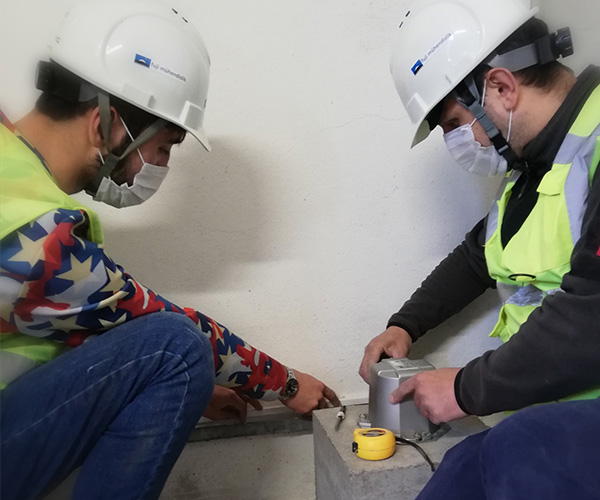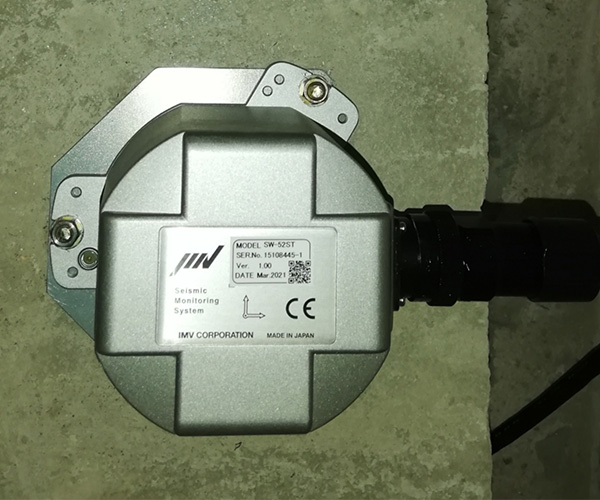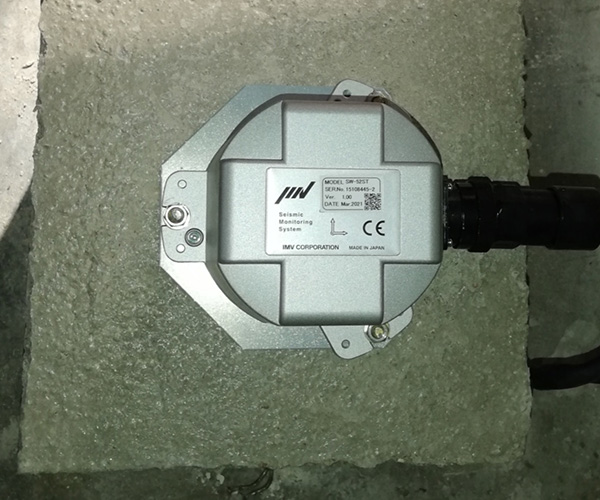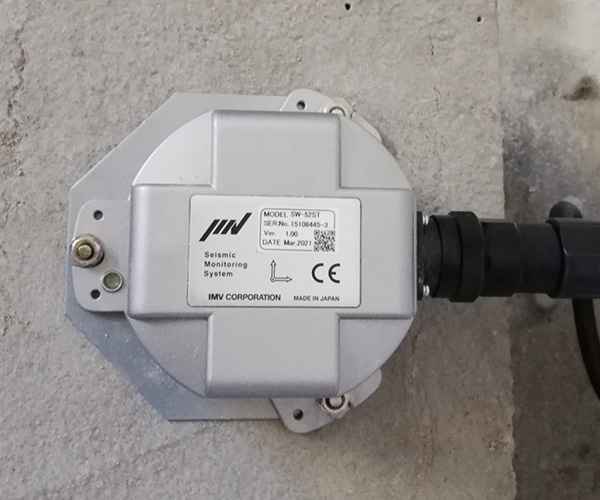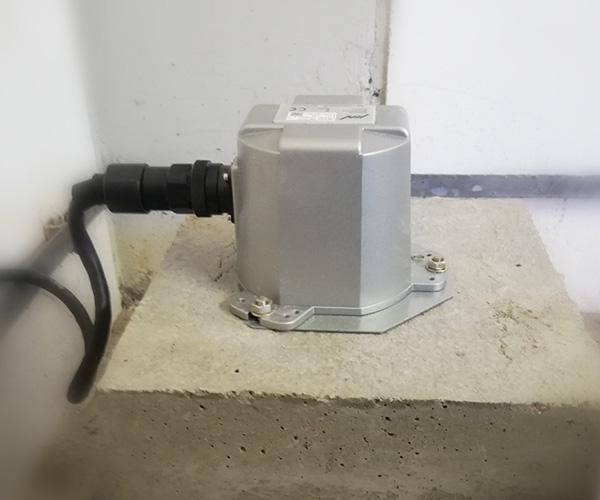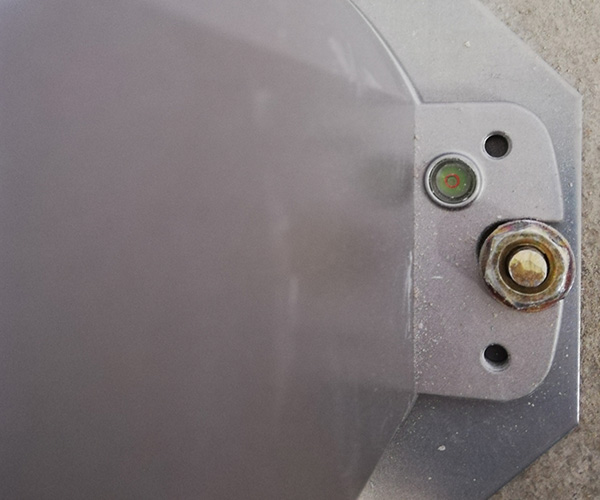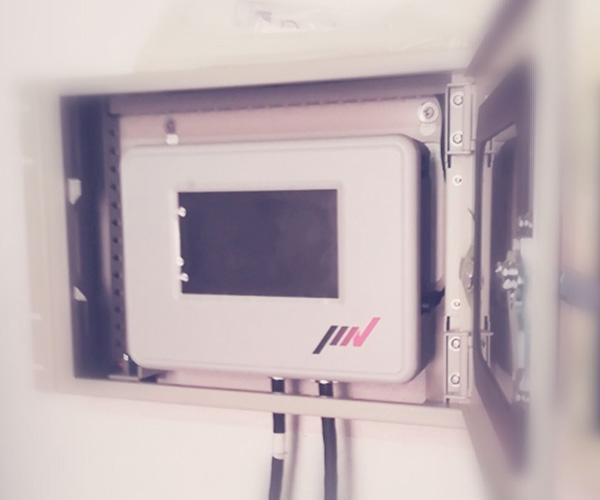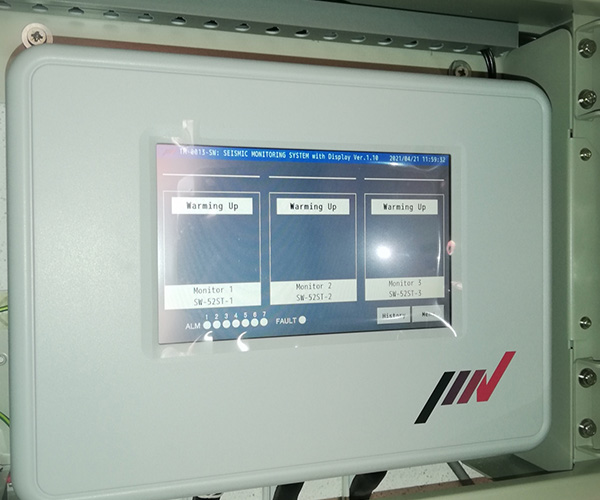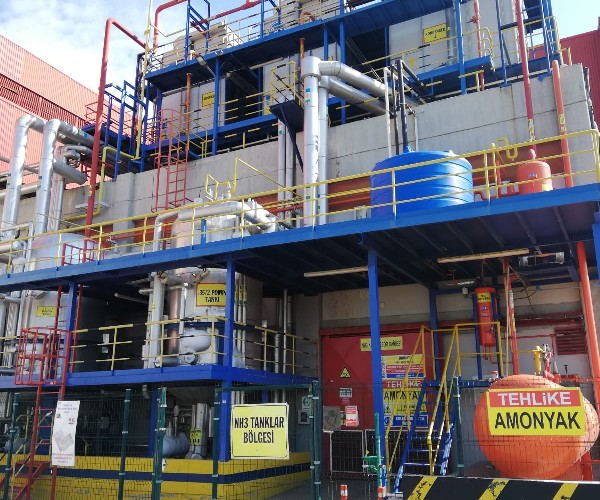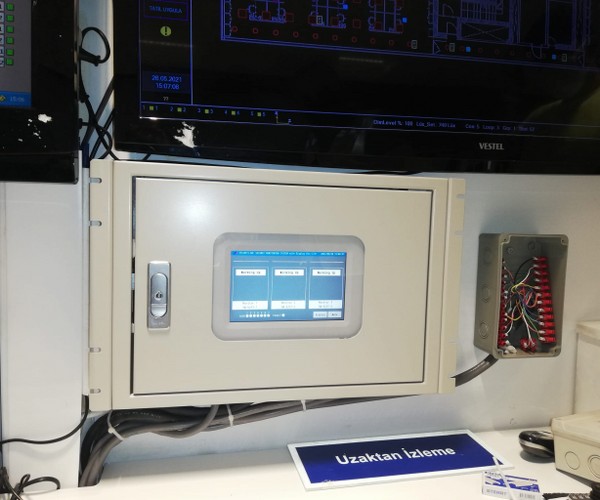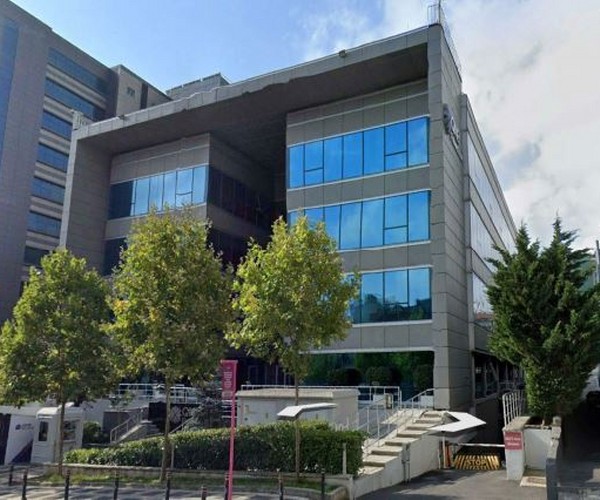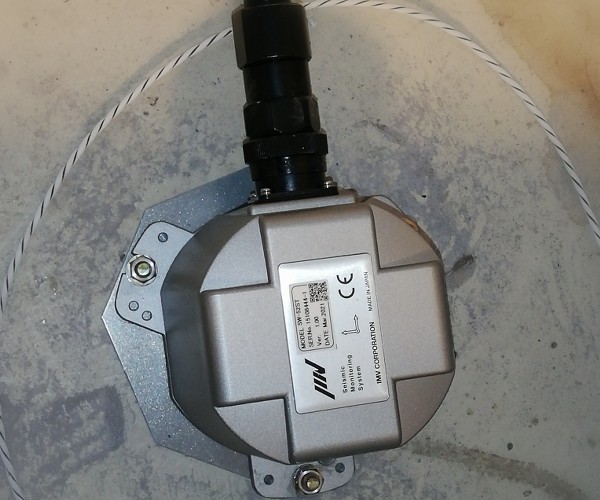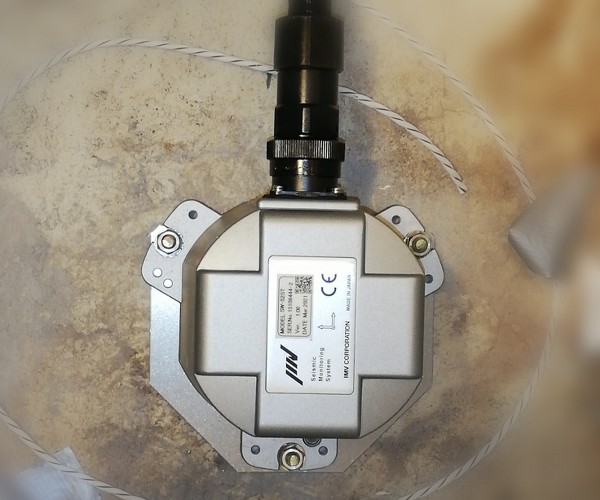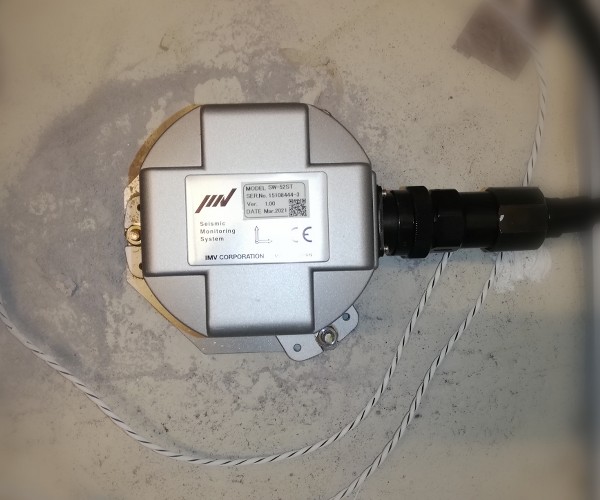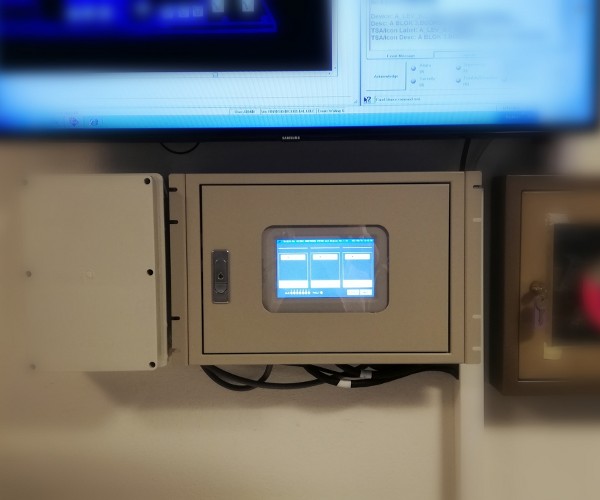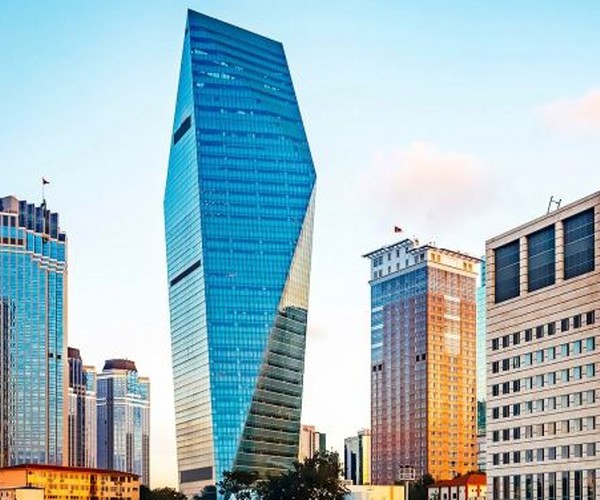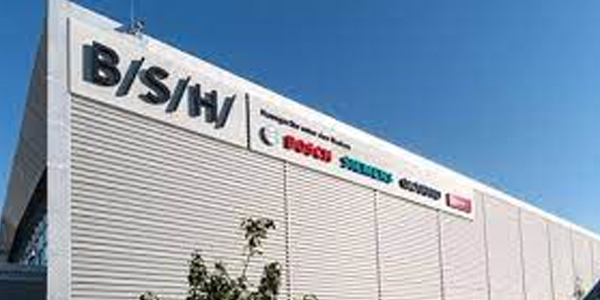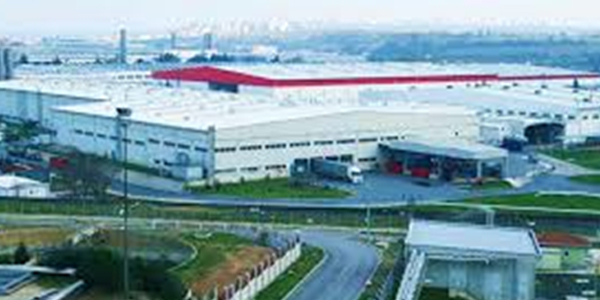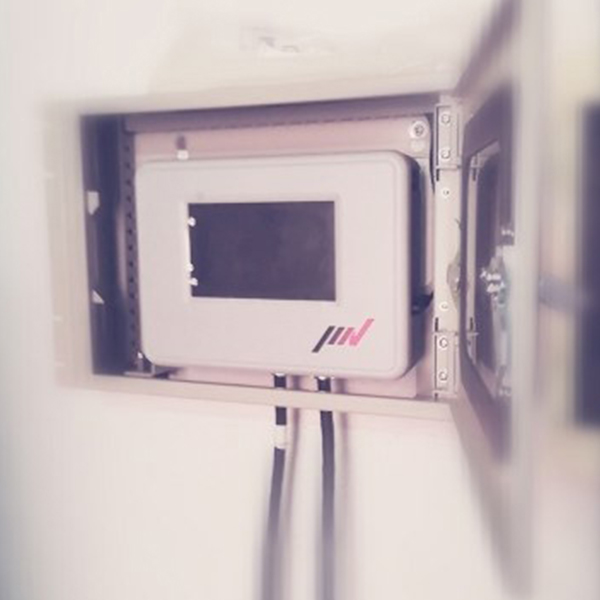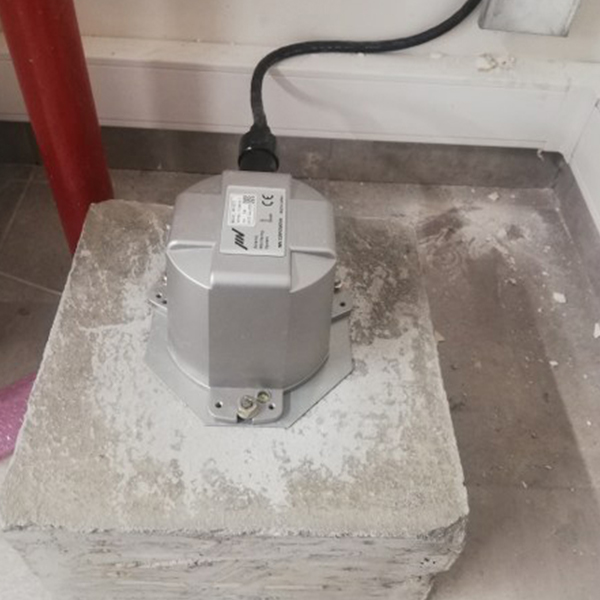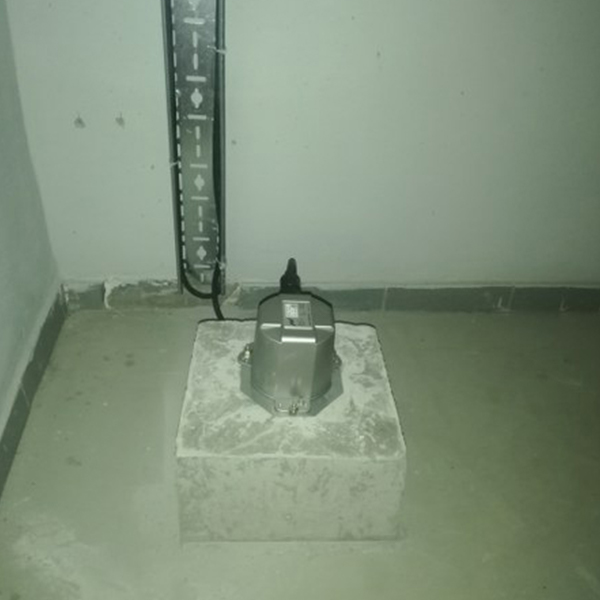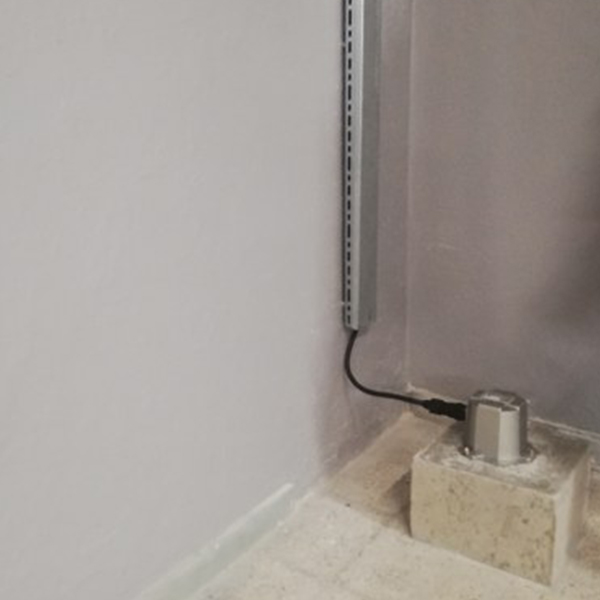Earthquake Emergency Intervention System
In the event of an earthquake, it is possible that a panic environment occurs, electrical leakage or fires caused by dangerous substances may damage critical equipment. These situations, which are referred to as "Secondary Disasters Caused by Earthquakes", may cause serious economic losses by preventing business sustainability.
Thanks to our Earthquake Emergency Intervention System solution, it is possible to control panic with announcements during an event, to shut down transmission lines containing hazardous substances and to automatically stop critical machinery and equipment.
Our system has been successfully tested in earthquakes in high-risk countries such as Japan and is applied to prevent earthquake secondary disasters.
Fuji Engineering as an EPC contractor offers the following services to prevent possible secondary disasters that may occur in any type of structure.
- Building / Facility specific system configuration development to prevent secondary disasters
- Preparing action scenarios for equipment to be intervened, determining threshold levels
- System supply and installation
- Annual maintenance service

Secondary Disasters
Events such as human panic, fires caused by electrical or hazardous substances leakage and sensitive machinery-equipment failure that may occur during or immediately after an earthquake are defined as secondary disasters. Such disasters can lead to loss of life and prevent the post-earthquake sustainability of the building.
The panic caused by earthquakes in highly populated environments can reach damaging levels. Especially in tall buildings, human panic should be taken under control.
It is possible to control panic and initiate evacuation (when the predetermined threshold level is exceeded) by automatic activation of the existing announcement equipment via the signal received from the earthquake emergency intervention system.
In order to prevent injuries at the exit of the building due to human panic during an earthquake and to save time, evacuation scenarios should be activated and elevators should be stopped at the nearest floor. Through the earthquake emergency intervention system (if predetermined threshold levels are exceeded), necessary actions can be taken automatically.

Systems operating with electrical energy can easily cause fires for various reasons due to earthquakes. Thanks to the earthquake emergency intervention system, main power lines (when the predetermined threshold level is exceeded) can be automatically shut down.
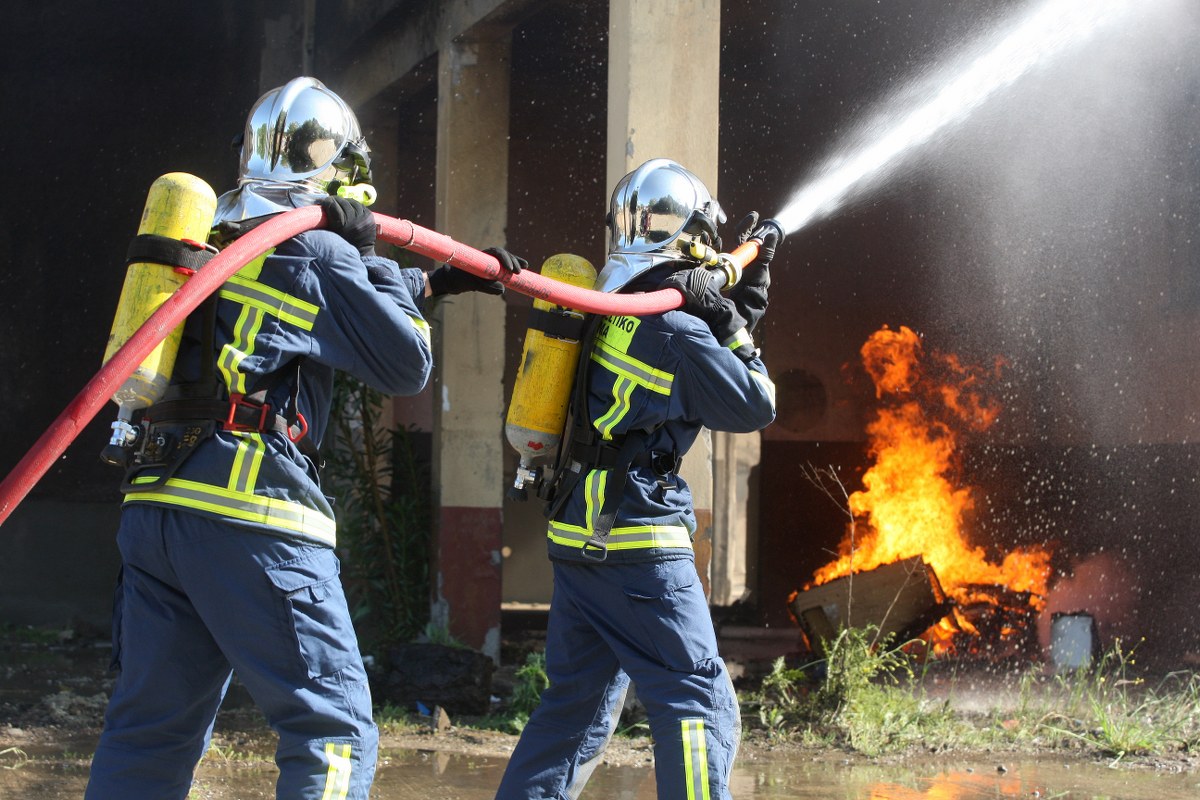
specially in industrial facilities, dangerous fluids in transmission pipes may leak due to earthquakes and cause fires. Thanks to the signal sent by the emergency intervention system (when the predetermined threshold level is exceeded), it can be ensured that the release/transmission of dangerous fluids and other substances is automatically interrupted at the time of the earthquake without a false alarm.

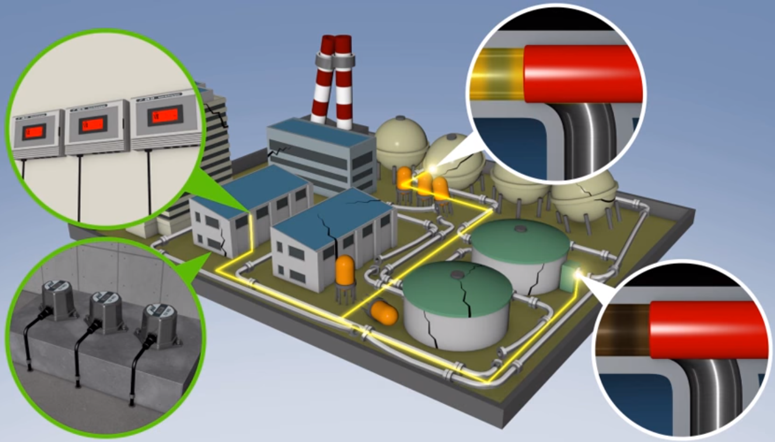
Sensitive machinery and equipment can be damaged by earthquakes and therefore there may be long-term business interruptions. Thanks to the earthquake emergency intervention system, critical equipment can be switched to a sleeping position in the event of an earthquake (at the recommended earthquake acceleration level).
Critical equipment such as chiller, steam boiler, heating / cooling systems can be automatically shut down during an earthquake.

Launch
Our purpose in organizing this event is to increase our awareness about earthquake warning technology. In view of this, we aim to obtain information about the application of these systems in our country and Japan. Japan experiences frequent earthquakes and is considered the world leader for technology related to this topic.
More than 30 percent of our country’s population lives in the Marmara region, accounting for nine percent of the area of the country and approximately 40 percent of the gross national production of the country. In 1999, an earthquake occurred in Izmit, Kocaeli in the Marmara region, damaging the country’s economic infrastructure and causing 6 million dollars in damage and nearly 20,000 casualties.
Similarly, the 1995 earthquake in Kobe in Japan caused 6,500 casualties and economic losses of 150 million dollars (2.5% of the gross national product) and is recorded in history as the most expensive earthquake. As with the Marmara region earthquake, the vast expenses resulted mainly from the intensive industrial area in and around the city of Kobe.
In particular, the massive 150 million dollar economic loss of the Kobe earthquake shows the requirement of earthquake warning systems for heavily populated areas and industrial facilities. The majority of the damage was not directly caused by the 20 second earthquake but caused by the earthquake triggering gas leakage, electric ignition, explosions, fire, human panic in high-rise buildings, and a number of other incidences based on secondary disasters. In Japan, many risk reduction strategies exist however these approaches are understood to be insufficient and the development of earthquake warning technology is essential.
In order to reduce the loss of life and protect our economic investments during an earthquake, it is essential to continue the development of new technology to create early-warning networks and stand-alone warning systems.
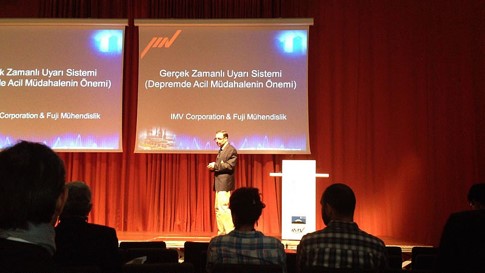
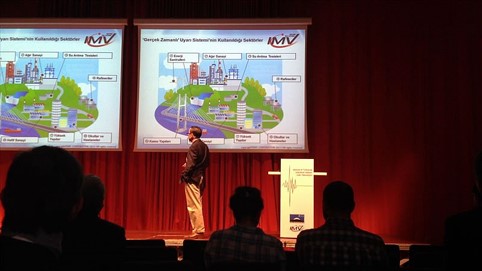
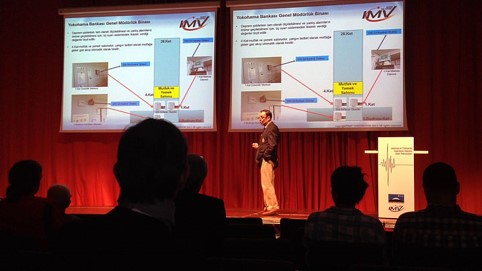
13:30-14:00: Registration – Welcome
14:00-14:05 Opening Remarks: Yusuf Zahit Gündoğdu
(Fuji Engineering Turkey, President)
14:05-14:25 Guest Speaker: Prof. Dr. Mustafa Erdik
(Bogazici University Kandilli Observatory And Earthquake Research Institute)
Istanbul Earthquake Early Warning and Rapid Information Systems
14:25-14:45 Guest Speaker: Prof. Dr. Hasan Boduroğlu
(Turkey Earthquake Foundation, Chairman of the Board)
Earthquakes and Awareness
14:45-15:05 Guest Speaker: Prof. Dr. Ali Pınar
(Bogazici University Kandilli Observatory And Earthquake Research Institute)
Kandilli Earthquake Research Center Conducted Marmara Region Early Warning System
15:05-15:25 Coffee Break
15:25-15:45 Guest Speaker: Dr. Fatih Sütçü
(Istanbul Technical University, Earthquake Engineering and Disaster Management Institute)
Japanese Meteorological Agency Disaster Warning System
15:45-16:05 Guest Speaker: Toshikazu Igarashi
(IMV Corporation Japan, Executive Board Member)
Applied General Earthquake Warning System in Japan
16:05-16:30 Closing Remarks: Yusuf Zahit Gündoğdu
(Fuji Engineering Turkey, President)
"Real-Time" Earthquake Warning Systems Implemented in Japan
16:30-17:00 Question – Answer
17:00-17:30 Coffee and Refreshments, Closing
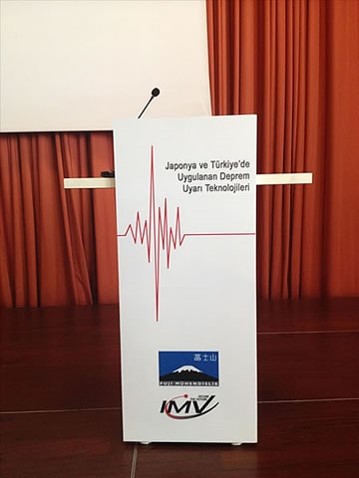
Yusuf Zahit Gündoğdu
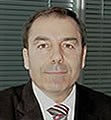
Fuji Engineering Turkey, President
Yusuf Zahit Gündoğdu finished his education in the Department of Civil Engineering at Yildiz Technical University in 1985 and later received his master’s degree from Bogazici University in 1988. During his 29 year career, Gündoğdu has managed or directly engineered many projects. He has experience in overseas work, including East Asia, Western Asia and Russia. He also worked in Japan for a span of seven years from 1992-1999, during which he was involved in many retrofit projects in the aftermath of the Kobe Earthquake. In the context of high-performance engineering, he has experience in the design of high-rise buildings, bridges and coastal structures along with strengthening of existing structures.
Prof. Dr. Mustafa Erdik
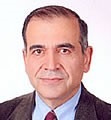
Bogazici University Kandilli Observatory and Earthquake Research Institute
After graduating from Middle East Technical University in Civil Engineering in 1970, Prof. Dr. Mustafa Erdik completed his masters and doctorate in the United States at Rice University from 1972-1975. He is the author of more than 300 technical papers and is the author or co-author of 6 books. He has received many international awards, including the TÜBİTAK Science Award, the NATO Summit Science Prize, UN-Sasakawa Prevention of Disasters Award, and the SSA-EERI-COSMOS organizations jointly presented him with the Bruce Bolt Award.
Prof. Dr. M. Hasan Boduroğlu
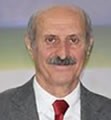
Turkey Earthquake Foundation, Chairman of the Board
After receiving his master’s degree from Robert College’s Graduate Studies Program in Civil Engineering in 1967, Prof. Dr. M. Hasan Boduroğlu (1944) completed his doctorate at the University of California, Berkeley and the University of Denver. Between the years 1985 and 1991, he was the Civil Engineering Faculty Dean for Istanbul Technical University and from 2003-2011 he served as the Coordinator for the Civil Engineering Dual Degree Program at the ITU-SUNY University of Buffalo. Since 2004, he has been the Chairman of the Board for the Turkey Earthquake Foundation.
Prof. Dr. Ali Pınar

Bogazici University Kandilli Observatory and Earthquake Research Institute, Department of Earthquake Engineering
Prof. Dr. Ali Pınar (1961) completed his graduate studies in the Department of Geophysical Engineering at Istanbul University in 1986. In 1995, he completed his doctoral thesis entitled “Monitoring Large Earthquake Rupture Process” at the Kandilli Observatory and Earthquake Research Institute. From 2000-2012, he served as a lecturer at Istanbul University. Since 2012, he continues to work on Earthquake Early Warning Systems at the Kandilli Observatory and Earthquake Research Institute in the Department of Earthquake Engineering.
Dr. Fatih Sütçü

Istanbul Technical University, Earthquake Engineering and Disaster Management Institute
Dr. Fatih Sütçü (1979) received his bachelor’s degree in Civil Engineering and Earthquake Engineering from Yildiz Technical University and received his master’s degree from Istanbul Technical University. In 2007 he completed his doctorate at the Tohoku University in Japan. From 2012-2013 at the Tokyo Institute of Technology, he carried out research and experiments using innovative methods for earthquake-resistant design and strengthening of existing structures. Currently he is working at Istanbul Technical University, Earthquake Engineering and Disaster Management Institute.
Toshikazu Igarashi

IMV Corporation Japan, Executive Board Member
In 1975, Toshikazu Igarashi began to work for Kanematsu Corporation found in Central Japan. Between the years of 1975 and 1999, he worked in Calgary Canada, London England and Japan, respectively, as a sales manager. From 2000-2008, he worked as a marketing manager at SKF in Japan. Since 2008, he has been the Executive Board Member for the global market for IMV Corporation.
Yusuf Zahit Gündoğdu
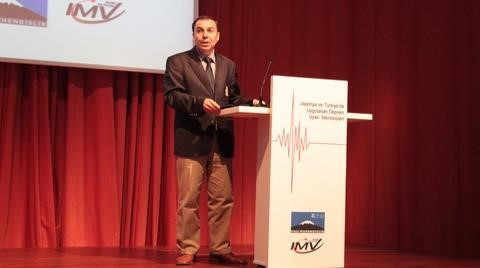
In his opening speech of the conference, President of Fuji Engineering, Yusuf Zahit Gündoğdu, who organized this event along with Japan, discussed the purpose of this conference as to provide people and institutions with information about earthquake warning systems implementation in Turkey. Gündoğdu, having experienced the 1999 Izmit earthquake in Kocaeli, mentioned the casualties caused by the earthquake. Yusuf Zahit Gündoğdu discussed the potential for reduction of casualties and economic loss during an earthquake in areas containing high population and many industrial plants by drawing attention to the necessity for an earthquake warning system, saying “In order to reduce the loss of life and protect our economic investments during an earthquake, it is essential to continue the development of new technology to create early-warning networks and stand-alone warning systems”.
For the closing remarks, President of Fuji Engineering, Yusuf Zahit Gündoğdu once again came to the podium to draw attention to the effects of secondary disasters caused by earthquakes and conveyed proper measures can be taken with the implementation of real-time alerts. Gündoğdu underlines that people may not be able to take immediate action, saying “During an earthquake, taking control or command is hard to do and may even be impossible. Therefore, in the moment of an earthquake, immediate intervention and action is vital to the prevention of secondary disasters after the earthquake”. Gündoğdu states that “With real-time warning systems, critical functions are stopped and it is possible to prevent secondary disasters”.
Doç. Dr. S. Ümit Dikmen
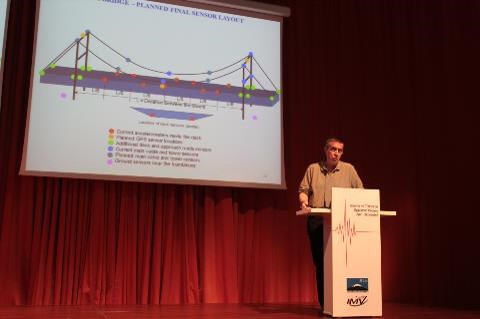
Dr. S. Ümit Dikmen, Associate Professor of the Department of Earthquake Engineering at Kandilli Observatory and Earthquake Research Institute, gave a presentation entitled “Istanbul Earthquake Early Warning and Rapid Information Systems”. Dikmen underlined that the placement of 100 sensitive earthquake sensors in Istanbul, as is thought with earthquake early warning systems, gives prior notice of an earthquake and provides an early exit from the building. Dikmen also noted that during an earthquake, early warning systems aim to prevent greater dangers by stopping electrical, natural gas and similar disasters.
Dikmen described the Istanbul Seismic Risk Mitigation and Emergency Preparedness Capacity Enhancement Project (ISMEP). As a priority, the seismic risk conditions of significant public buildings are to be examined and according to the examination, the buildings will be strengthened or demolished and rebuilt. With this system, Dikmen emphasized that the damage of a building can be predicted and he iterated which building and how it will need early intervention is known. The seismic movements of high-rise buildings and industrial plants can be controlled by placing recording devices, states Dikmen, and the records taken from the devices after an earthquake detail the necessary interventions.
Cultural history buildings are also subject to this monitoring, including Hagia Sophia, Suleiman Mosque, Fatih Mosque, Mihrimah Sultan Mosque and the Blue Mosque, noted Dikmen. He also mentioned the third Bosphorus Bridge under construction along with the two existing bridges will also be earthquake monitored.
Dikmen also expressed that the Marmaray will be monitored, with recording devices placed at the beginning and end of each tube underwater.
Prof. Dr. Hasan Boduroğlu
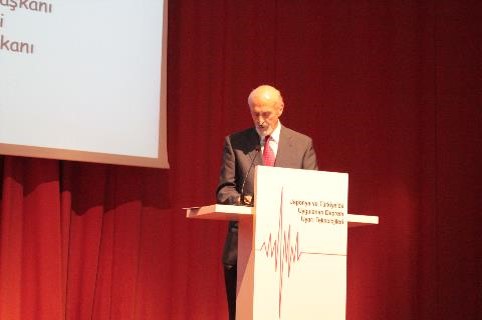
Turkey Earthquake Foundation, Chairman of the Board Prof. Dr. Hasan Boduroğlu gave a presentation called “Earthquakes and Awareness”. Boduroğlu touched on this topic, saying it is necessary to be conscious of the risks and effects of an expected major earthquake in an area. Boduroğlu said “Above all else, are we aware of this risk? The risk could relate to our homes and our workplaces. Additionally, schools, hospitals and similar buildings that we use may be at risk”.
Indicating that even an earthquake resistant building has the potential to collapse, Boduroğlu drew attention to non-structural hazards. He stated “We aren’t actually ‘aware’ of the danger we are in”; the death and injury of “buildings” first comes to mind. When a building collapses, the source of danger arises from the objects within the building, explained Boduroğlu, emphasizing the importance of determining possible risks and making necessary preparations. Before an earthquake, information about what to do during and after an earthquake should be provided; “Don’t be afraid of earthquakes, learn about them” Boduroğlu expressed to the audience.
Prof. Dr. Ali Pınar
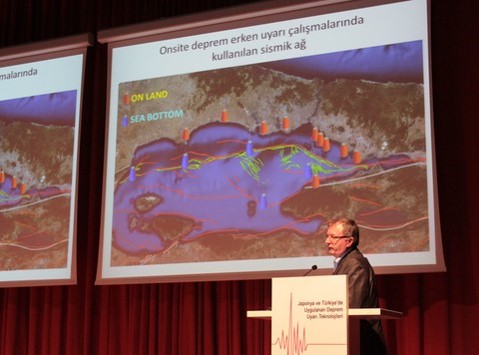
Bogazici University Kandilli Observatory and Earthquake Research Institute’s Prof. Dr. Ali Pınar shared information in his presentation about the Marmara Region Earthquake Warning System conducted at the Kandilli Observatory and Earthquake Research Center. When comparing regional and onsite earthquake warning systems, Pınar indicated that in areas close to the earthquake zone, the onsite system should be preferred and in more remote locations, the regional system should be preferred.
Pınar gave information about the seismic network used in the Kandilli Observatory onsite earthquake warning studies and later mentioned the observatory’s regional earthquake early warning algorithms VIRTUAL Seismologist (VS), Presto and ElarmS.
Prof. Dr. Ali Pınar pointed out that in general, earthquake early warning systems consider short and rigid structures. The majority of seismic energy is carried through long period waves, therefore even earthquakes occurring far away still put high-rise buildings at risk, Pınar underlined. Every year, the number of long period and high-rise buildings in Istanbul is increasing; “Therefore, it is especially important to work on regional earthquake warning systems to reduce the impact of earthquakes occurring from a distance” emphasized Pınar.
Dr. Fatih Sütçü
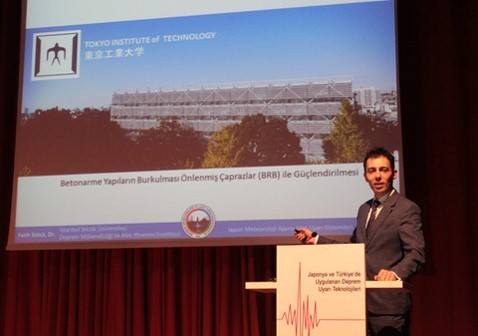
Dr. Fatih Sütçü, of Istanbul Technical University, Earthquake Engineering and Disaster Management Institute, gave a speech entitled “Japanese Meteorological Agency Disaster Warning System / Japanese Earthquake Early Warning System Observations”. Dr. Fatih Sütçü completed his doctoral studies at Tohoku University between the years 2003 and 2006, and later transferred to Tokyo Institute of Technology to conduct his post-doctoral work in strengthening structures following the disastrous Fukushima earthquake on March 11, 2011. According to Sütçü’s findings after transferring, both Tohoku University and Tokyo Institute of Technology use buckling restrained braces (BRB) at the façades as strengthening when designing isolated buildings.
Dr. Fatih Sütçü continued his presentation, giving information about earthquakes and early warning systems of the Japanese Meteorological Agency. Earthquake signals are collected for the Early Warning System by the Japanese Meteorological Agency and then processed in four second lengths through algorithms to determine if the signals are earthquake waves. This information is transferred to the Early Warning System and is then alerted to concerned individuals and entities, explained Sütçü. The early warning consists of two measures: the first priority warning report is intended for schools, hospitals, factories, etc., and the second emergency earthquake alert is made known for the public.
Kenji Akiyoshi
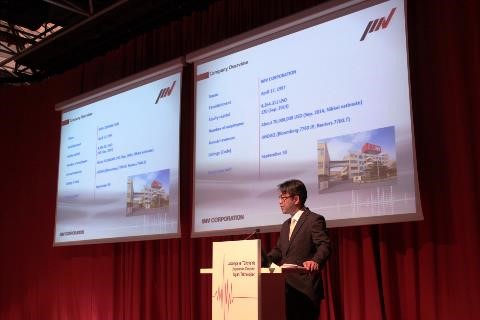
IMV Corporation Japan, Thermal and Nuclear Plant System Reinforcement Measuring Instrument Expert, Kenji Akiyoshi presented about the tripartite Japanese earthquake strategy. No one can predict the size of an earthquake; the great disaster caused by the 1995 Kobe Earthquake spurred the renewal of seismic retrofit strategies in Japan, Akiyoshi noted. He mentioned the adoption of the approach to lower losses during and after the earthquake. The three-way system consisting of early warning systems, seismic monitoring networks and earthquake measuring devices all working together, indicated Akiyoshi, can compensate for any disruption that can be experienced, as should an ideal system perform. Akiyoshi underlined the importance of warning systems to ensure the size of disasters do not increase, especially for industrial buildings, water storage areas such as dams, and power plants. In this sense, he emphasized the vital importance of earthquake observation devices.
Conferences
Participated at the ministry level from Japan in this technology fair on Turkey - Japan disaster prevention collaboration, a serial of conferences presenting the Japanese experience was carried out by the Japanese companies joined. IMV engineers who came from Japan have introduced SW52/54 on-site Earthquake Warning System in this conference event.
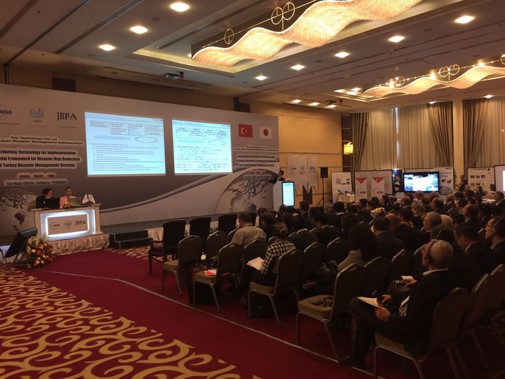
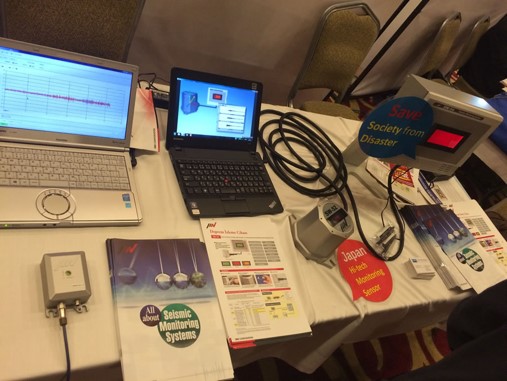
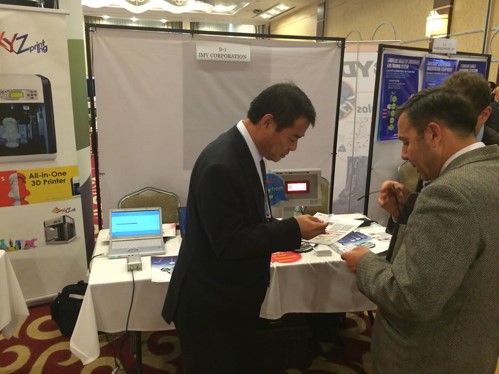
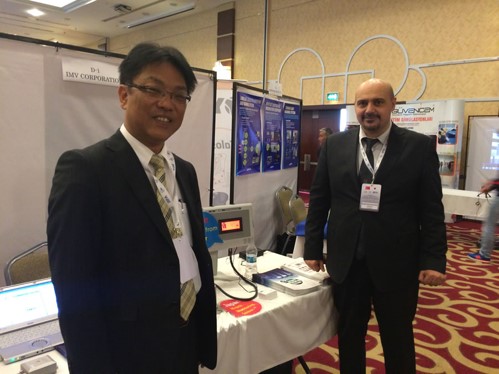
Fuji Engineering participated in the Turkish-Japanese Joint Seminar on Disaster Risk Reduction in Ankara AFAD (Disaster & Emergency Management Authority) on December 27, 2018. During the seminar, Earthquake Emergency Intervention System was exhibited in our company stand. The system was developed by IMV Corporation after the 1995 Kobe earthquake in order to prevent secondary disasters such as fire, explosion, significant machine-equipment failure that may occur immediately after the earthquake. We would like to thank all Turkish and Japanese participants who visited our stand for their interest.
You can see the details about the event from the link below.
https://en.afad.gov.tr/turkey-japan-joint-seminar-on-disaster-risk-reduction
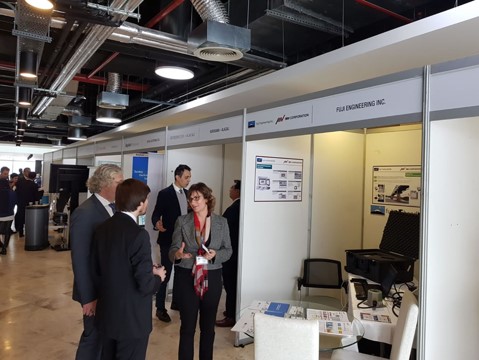
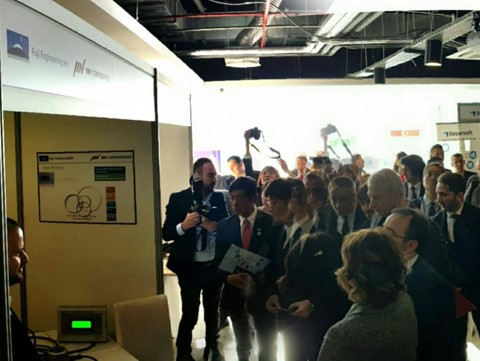
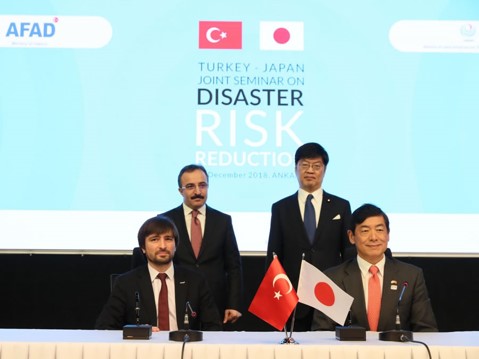
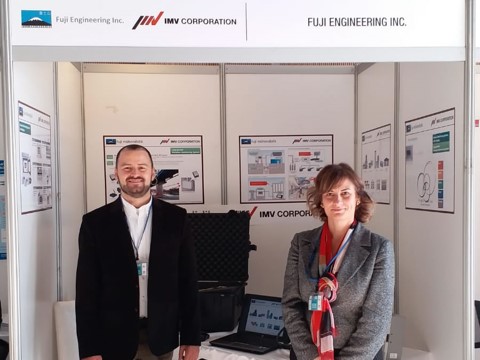
Fuji Engineering participated in the International Disaster and Resilience Congress (IDRC 2019) held on 26-28 June 2019 at Eskisehir Technical University. At the congress, where studies from different disciplines were discussed on a common platform, Fuji Engineering presented a paper on “Real-Time Intervention Systems Used in Japan for Preventing Earthquake Secondary Disaster”.
You can see the details about the event from the link below.
http://www.idrcongress.org/en/about-us
Our statement about «Real-Time Intervention Systems used in Japan for Preventing Earthquake Secondary Disasters» and other articles can be accessed from the link below.
http://www.i-resilience.org/uploads/apers-of-idrc-2019.pdf
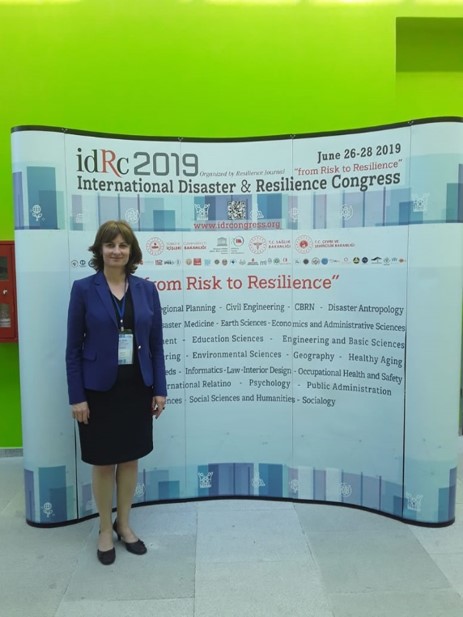
Fuji Engineering participated in the Process Safety Symposium held at İzmir Tepe Kule Congress Center on September 22-23, 2021. In the event, the benefits of using the Japanese IMV Earthquake Emergency Intervention System for industrial facilities and how to prevent earthquake secondary disasters were conveyed.
We would like to thank our valuable visitors for the interest shown to our booth where Fuji Engineering's applications in industrial facilities and some critical structures were shared.
Detailed information about the event can be found at the link below.
https://www.prosesemniyetisempozyumu.com/
Fuji Engineering participated in the 3rd Process Safety Symposium held on 10-11 May 2022 in IT Valley under the coordination of Kocaeli Chamber of Industry. In the event, the benefits of using the Japanese IMV Earthquake Emergency Intervention System for industrial facilities and how to prevent earthquake secondary disasters were conveyed.
ATEX certified Earthquake Emergency Intervention System is provided together with Fuji Engineering’s know-how. The system, which works 100% reliably and without causing false alarms with its embedded software, contributes to post-earthquake sustainability by preventing possible secondary disasters in industrial facilities with hazardous processes.
We would like to thank our valuable visitors for the interest shown to our booth where Fuji Engineering's applications in industrial facilities and some critical structures were shared.
Detailed information about the event can be found at the link below.
https://www.prosesemniyetisempozyumu.com/
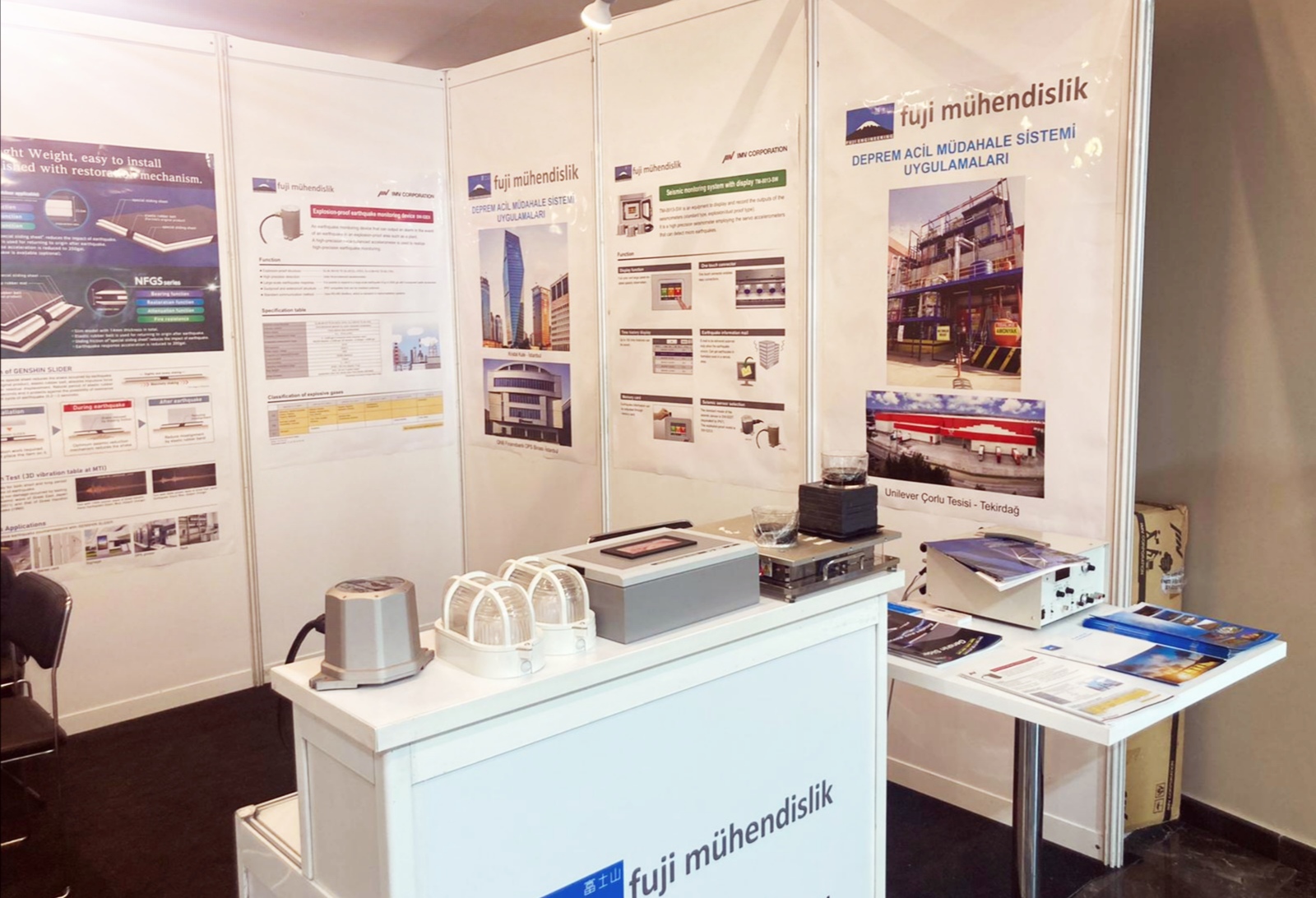
Fuji Engineering participated in Heritage Istanbul 2022 Fair and Conferences held in Lütfi Kırdar International Congress and Exhibition Center between 11-13 May.
Our Earthquake Emergency Intervention System solutions and applications were exhibited at our company booth, where innovative technologies were introduced for the post-earthquake sustainability of historical artifacts and structures.
The Earthquake Emergency Intervention System developed in Japan to prevent secondary disasters such as human panic that may occur in historical buildings, palaces and museums during an earthquake was introduced at our stand. The system is provided with the know-how of Fuji Engineering and works 100% reliably and without causing false alarms with its embedded software, contributing to post-earthquake sustainability by preventing possible secondary disasters in historical buildings and structures.
We are proud to contribute to the sustainability of cultural heritage, and we thank our valuable visitors for their interest.
Detailed information about the event can be found at the link below.
http://expoheritage.com/heritageistanbul/en/
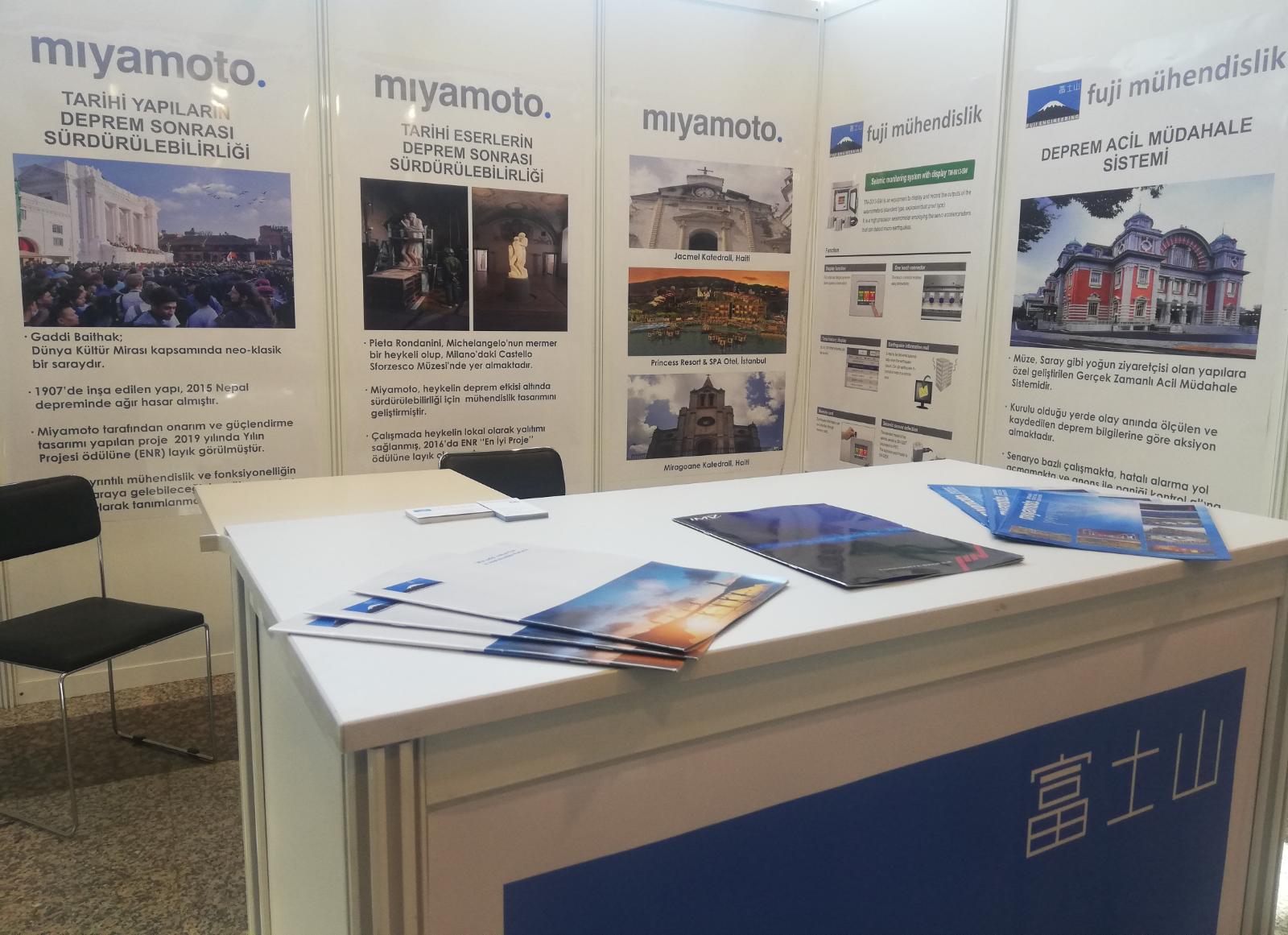
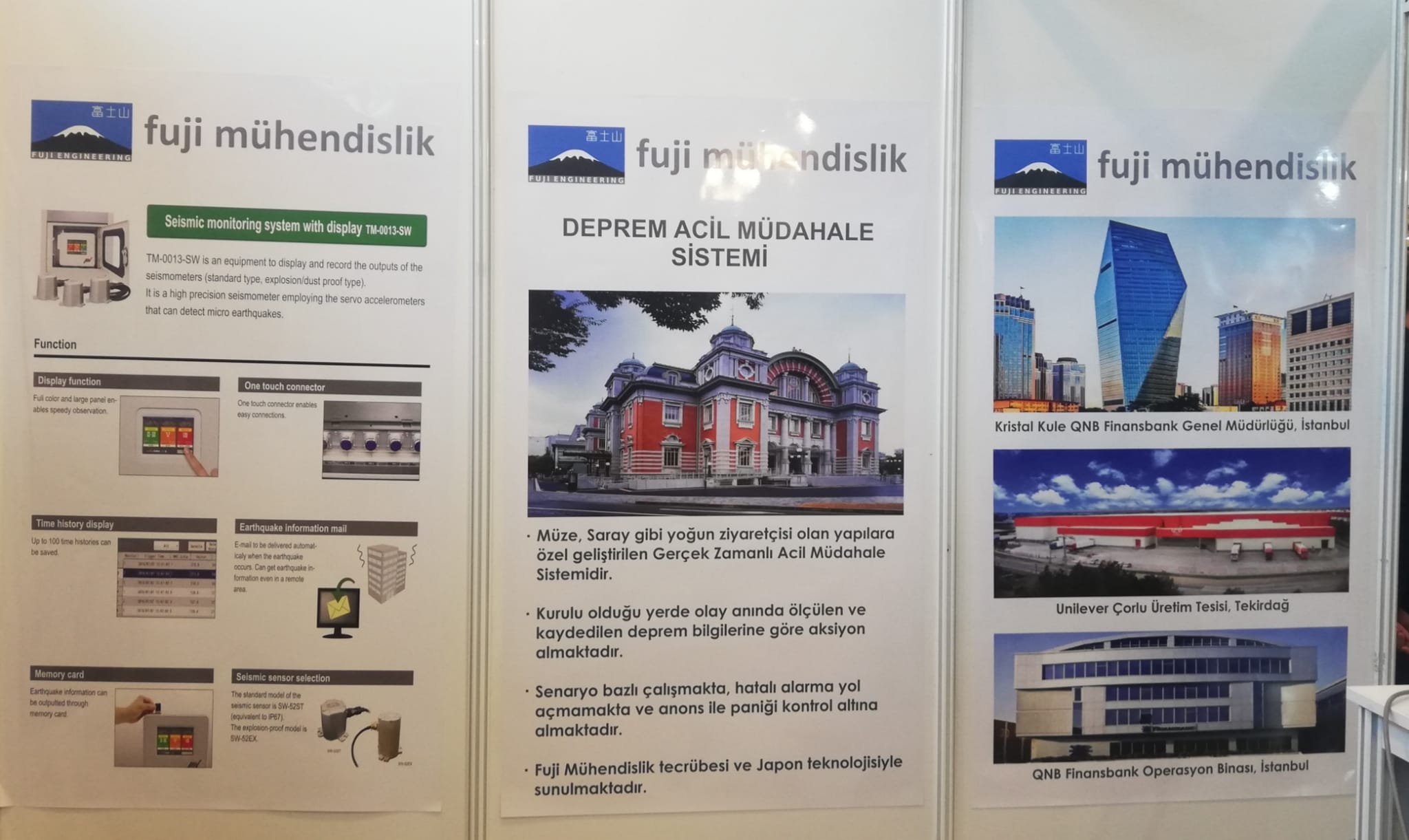
Fuji Engineering participated in the 6th Process Safety Symposium held on 17-18 May 2022 in The Green Park Pendik Hotel.
In the event, the benefits of using the Japanese IMV Earthquake Emergency Intervention System for industrial facilities and how to prevent earthquake secondary disasters were conveyed.
ATEX certified Earthquake Emergency Intervention System is provided together with Fuji Engineering’s know-how. The system, which works 100% reliably and without causing false alarms with its embedded software, contributes to post-earthquake sustainability by preventing possible secondary disasters in industrial facilities with hazardous processes.
We would like to thank our valuable visitors for the interest shown to our booth where Fuji Engineering's applications in industrial facilities and some critical structures were shared.
Detailed information about the event can be found at the link below.
https://www.prosesemniyetisempozyumu.com/
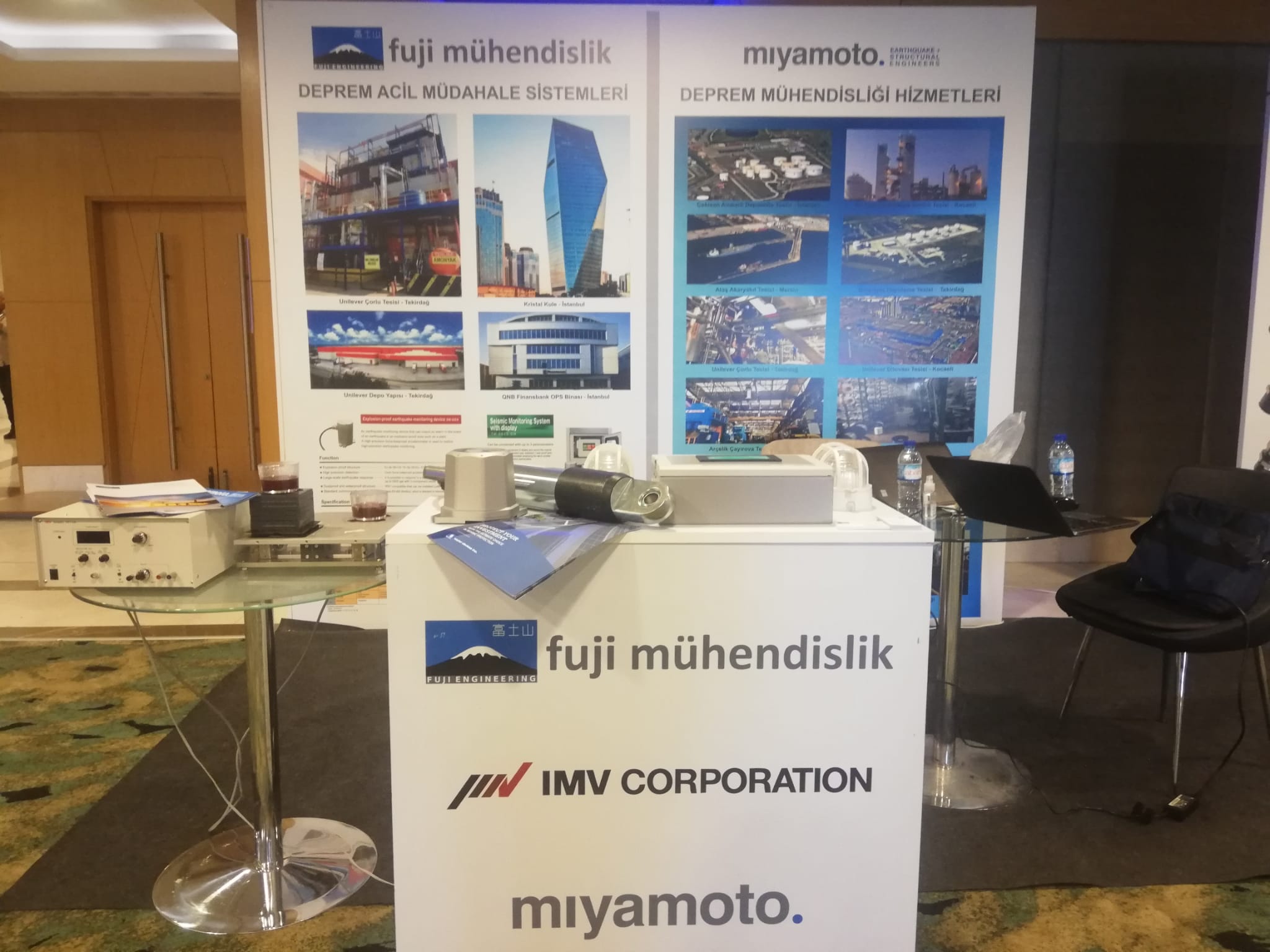
Fuji Engineering participated in the Data Center Ankara Conference held on 14 March 2023 in Ankara
How to prevent secondary disasters that may occur after the event by the "Earthquake Emergency Intervention System" in critical data centers was presented with a demo set at Fuji Engineering's booth. The system, which works 100% reliably and without causing false alarms with its embedded software, contributes to post-earthquake sustainability by preventing possible secondary disasters in critical structures such as data centers.
Thanks to the scenario-based system (specific to the relevant data center), in case of exceeding the predefined earthquake threshold levels, critical actions may be automatically taken or emergency action plans can be activated to prevent human panic.
Detailed information about the conference can be found at the link below.
https://datacenteristanbul.com/
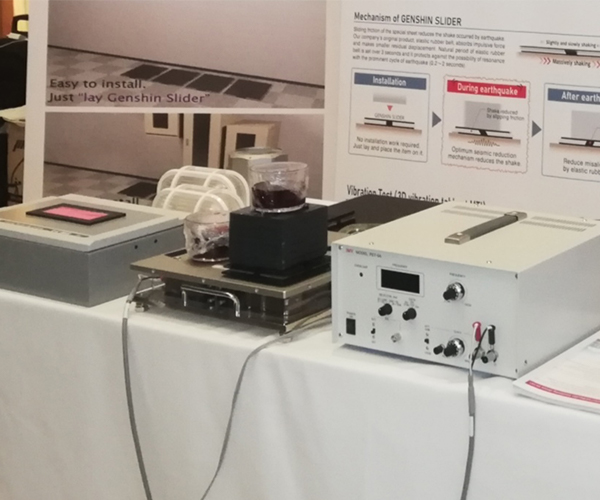
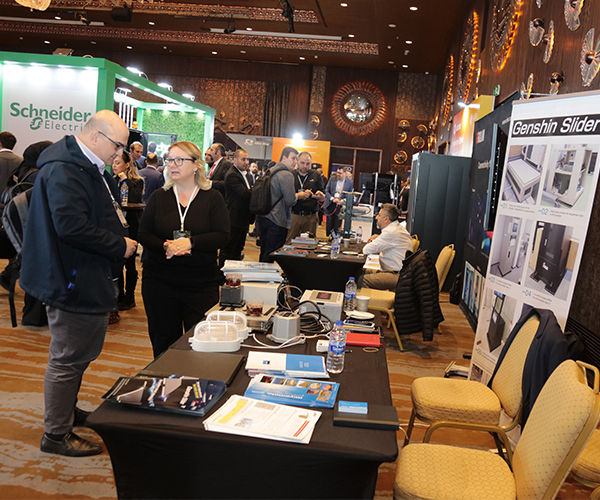
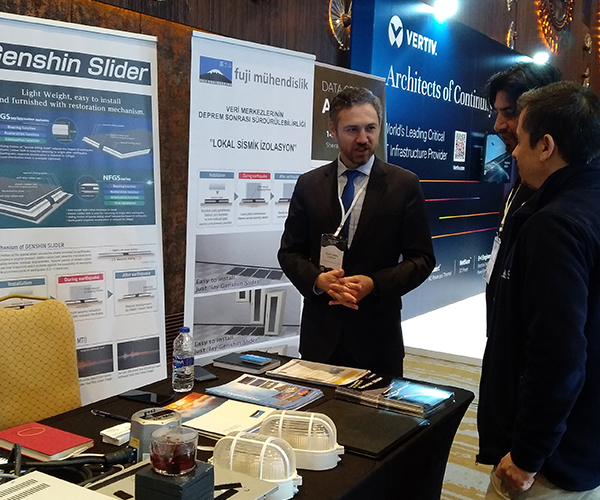
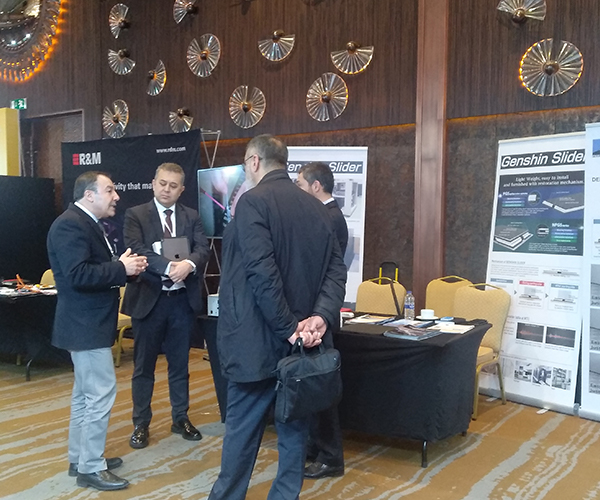
Fuji Engineering participated in the 7th Process Safety Symposium held on 3-4 May 2023 in The Green Park Pendik Hotel.
In the event, the benefits of using the Japanese IMV Earthquake Emergency Intervention System for industrial facilities and how to prevent earthquake secondary disasters were conveyed.
ATEX certified Earthquake Emergency Intervention System is provided together with Fuji Engineering’s know-how. The system, which works 100% reliably and without causing false alarms with its embedded software, contributes to post-earthquake sustainability by preventing possible secondary disasters in industrial facilities with hazardous processes.
We would like to thank our valuable visitors for the interest shown to our booth where Fuji Engineering's applications in industrial facilities and some critical structures were shared.
Detailed information about the event can be found at the link below.
https://www.prosesemniyetisempozyumu.com/
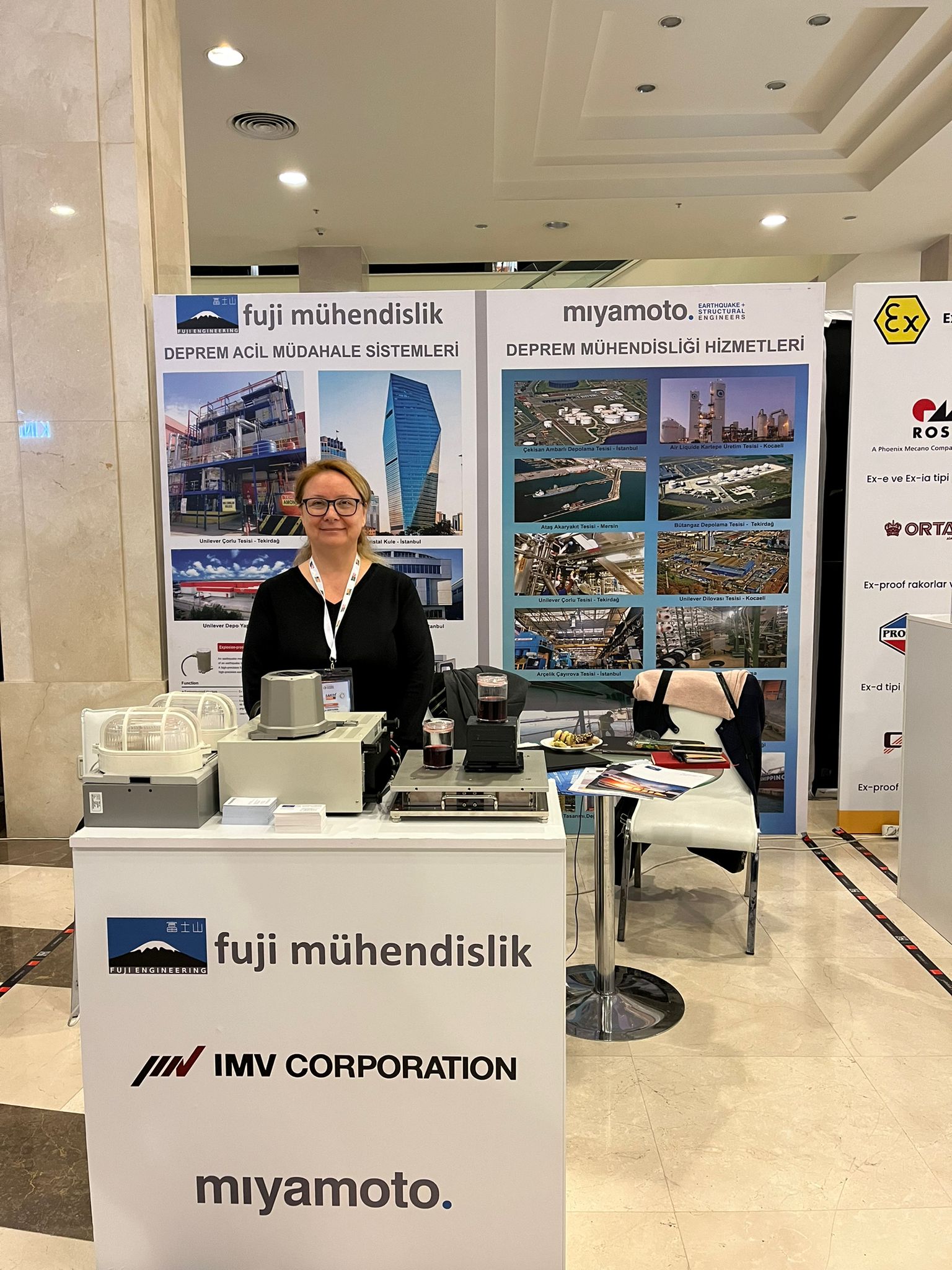
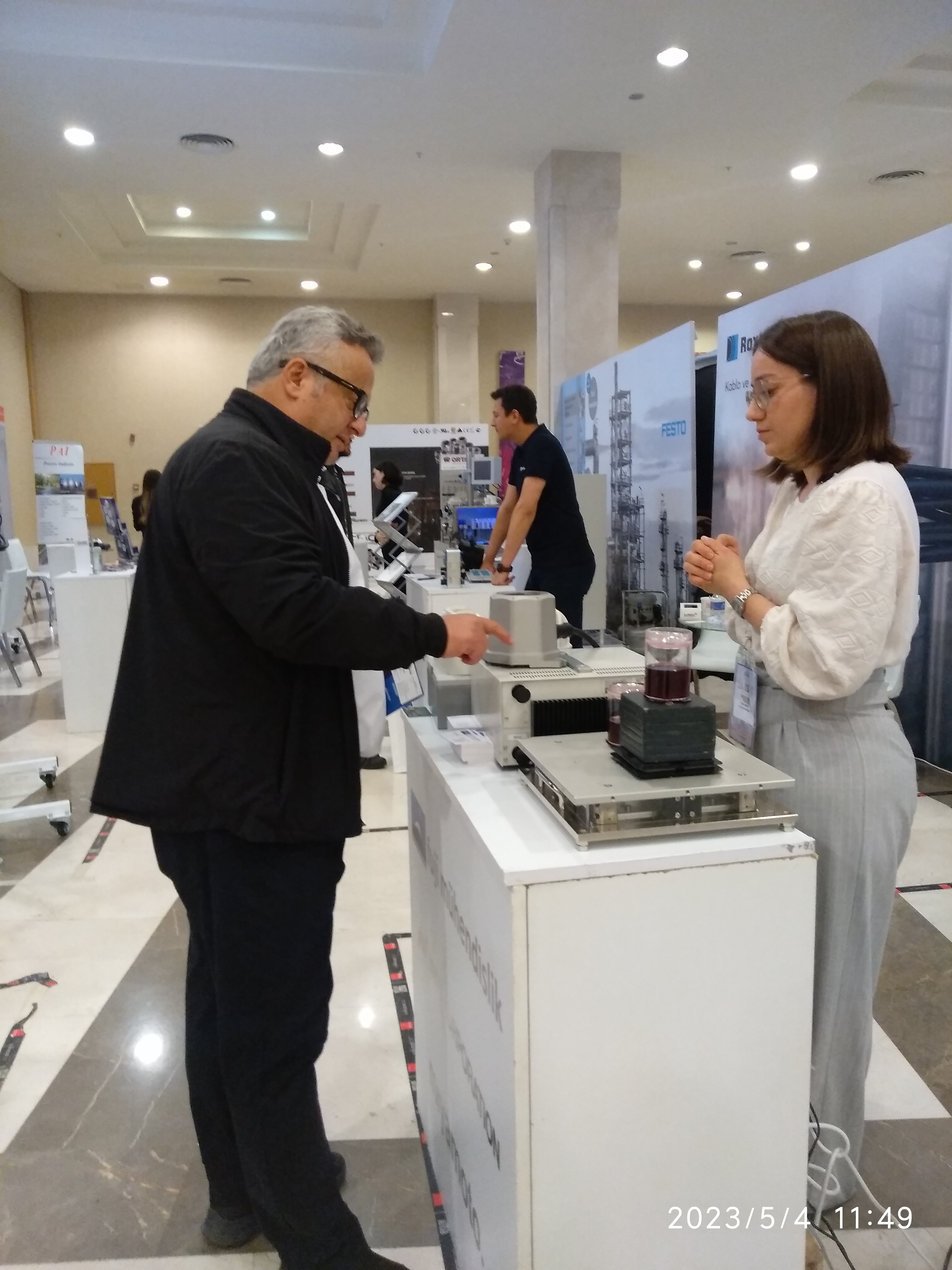
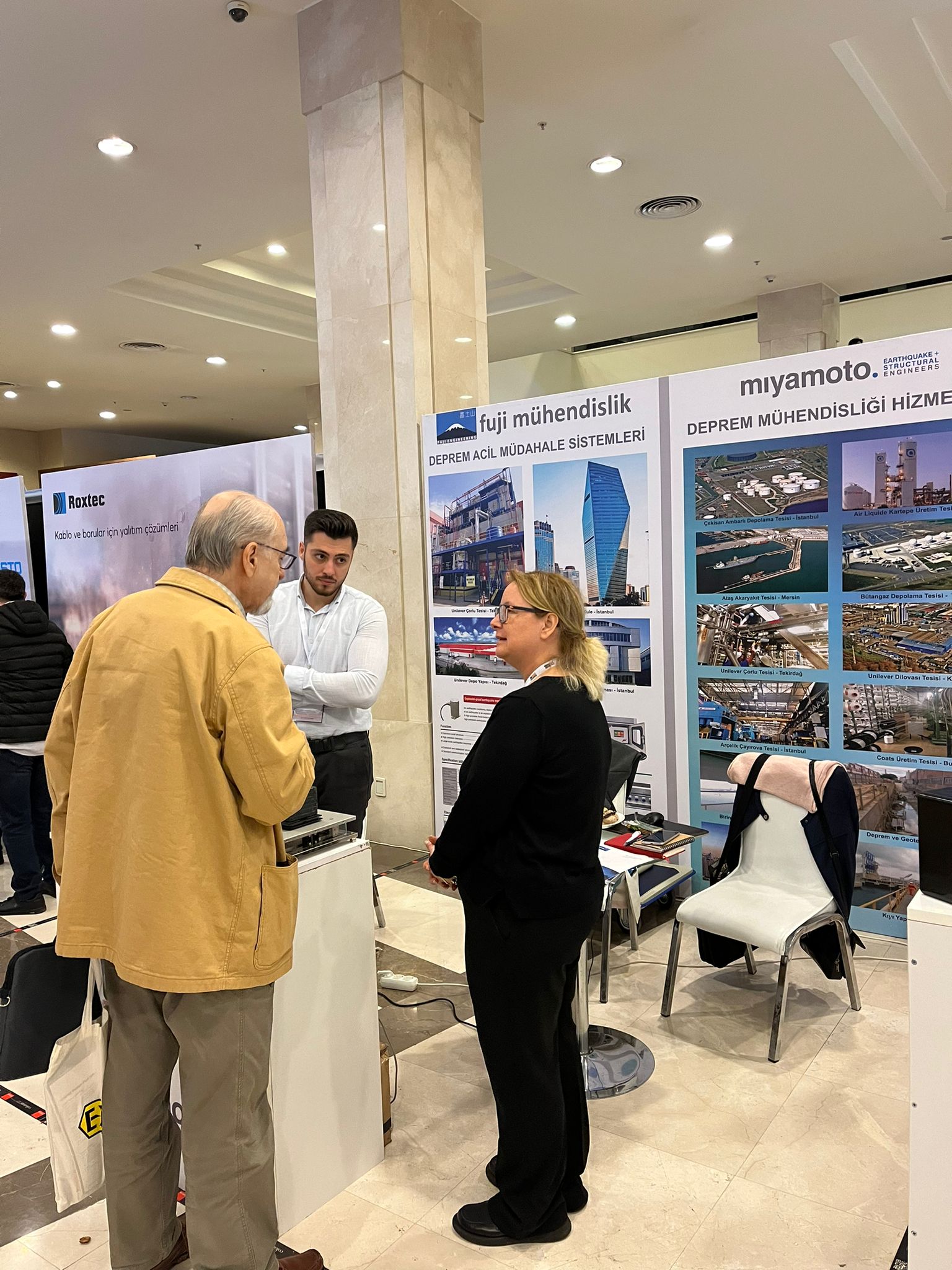
Fuji Engineering participated in the 7th International Conference on Earthquake Engineering and Seismology event held in Antalya on 6-10 November 2023. At the event, the Earthquake Emergency Response system applications in Türkiye and other countries were introduced.
Detailed information about the event can be found at the link below.
https://18wcsi-7icees.org/




Fairs
Our company participated in the Trade Fair Seismic Safety held at WOW Congress Center on April 28-29, 2014. It was explained to our guests who visited our booth that in a possible earthquake, critical equipment and dangerous lines in the facilities can be safely shut down by the earthquake emergency intervention system and secondary disasters can be prevented accordingly.
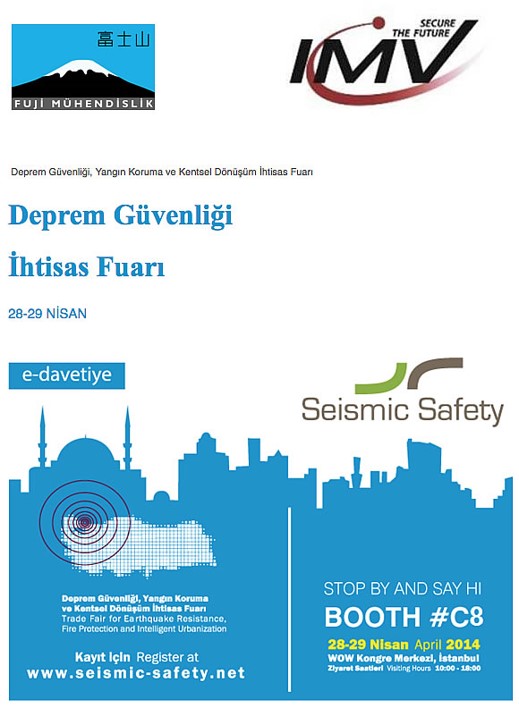
Our stand took place in the area reserved for Japan at the WIN Eurasia Automation Fair held on 19-22 March 2015. A presentation was made with IMV engineers from Japan on how to prevent secondary disasters that may occur following a possible earthquake and how to ensure the security of automation systems.
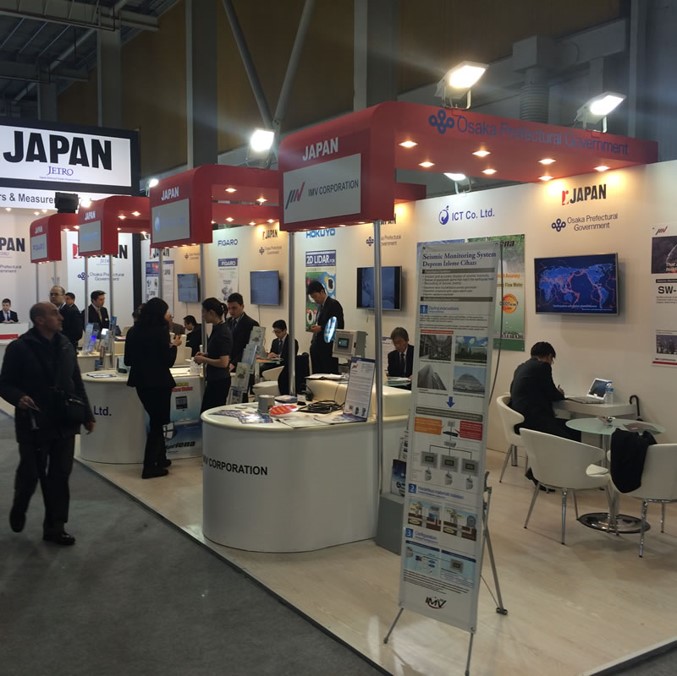
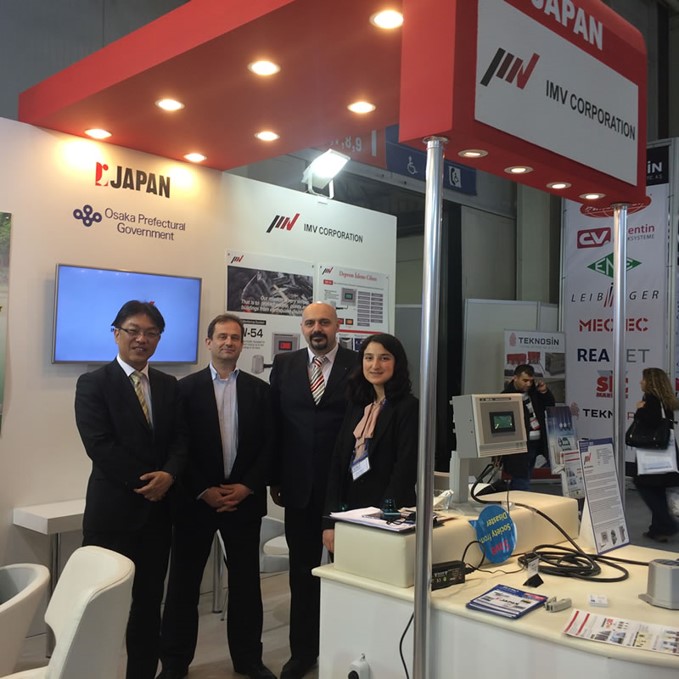
Fuji Engineering participated in the TurkeyBuild Fair held at Istanbul TÜYAP Fair and Congress Center on March 23-26, 2022, at its booth number A111, Hall-2.
IMV Emergency Intervention System, which prevents earthquake secondary disasters, and application examples in various industries and critical structures were introduced at our stand.
IMV Earthquake Emergency Intervention System works on real-time according to the earthquake information measured at the place where it is installed (without causing false alarm).
We would like to thank our valuable visitors for the interest shown in our innovative earthquake technologies and IMV products.
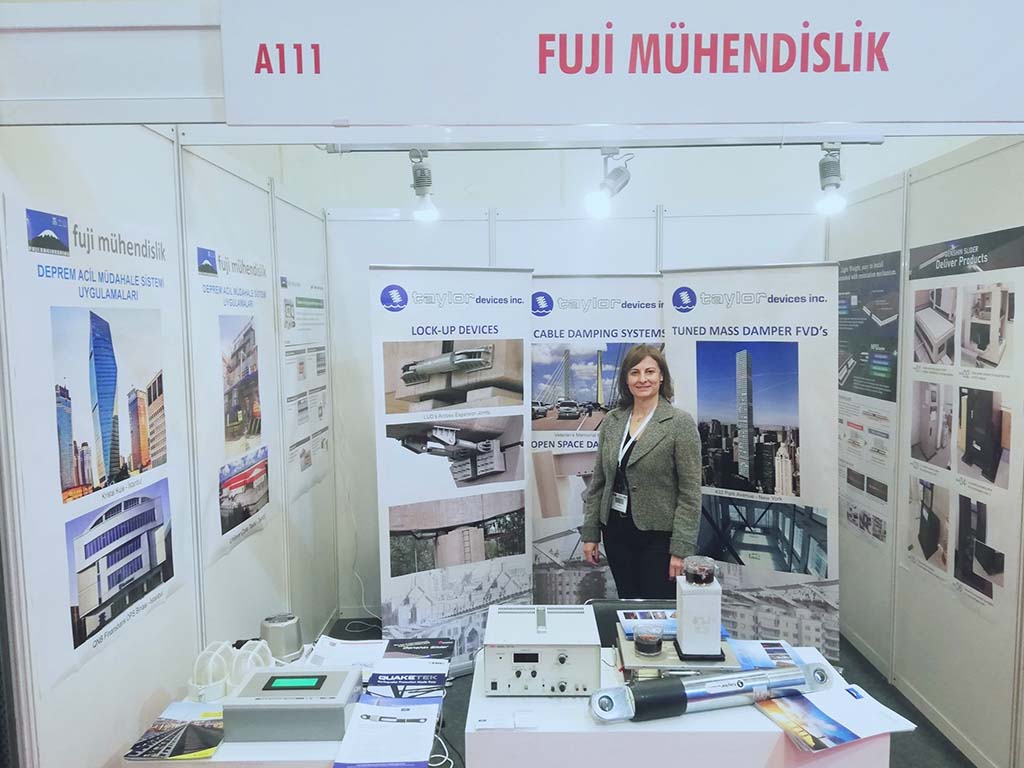
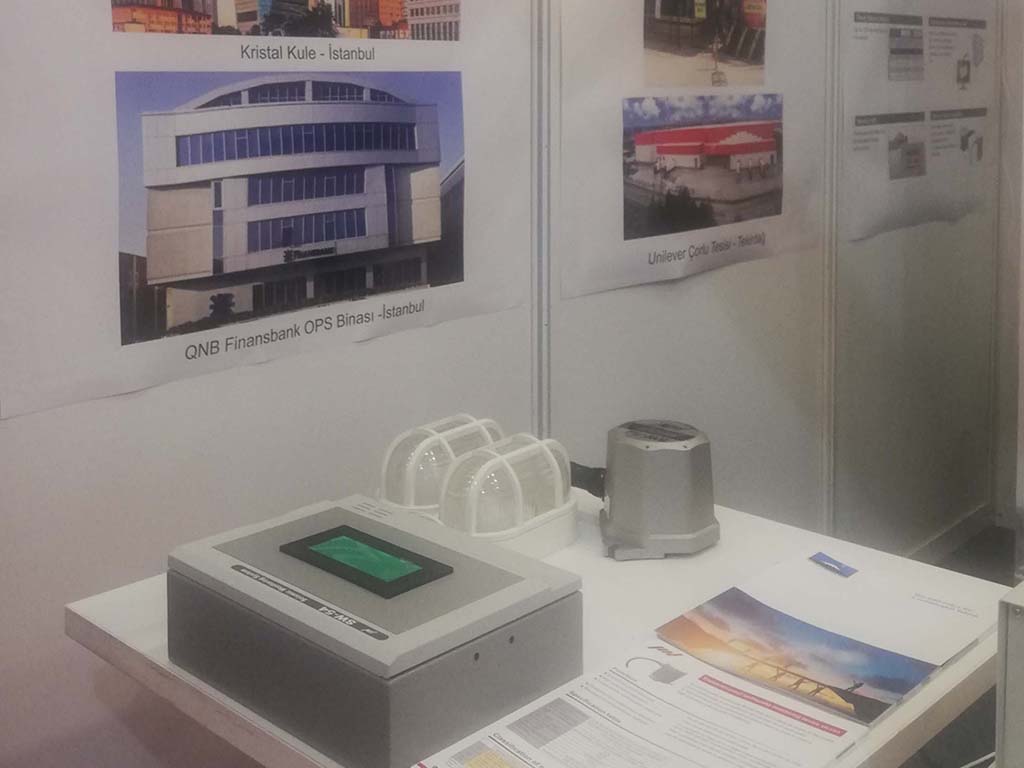
Fuji Engineering participated in the DCF Data Center Expo & Conference held on 20-22 October 2022 in Istanbul Expo Center.
How to prevent secondary disasters that may occur after the event by the "Earthquake Emergency Intervention System" in critical data centers was presented with a demo set at Fuji Engineering's booth. The system, which works 100% reliably and without causing false alarms with its embedded software, contributes to post-earthquake sustainability by preventing possible secondary disasters in critical structures such as data centers.
Thanks to the scenario-based system (specific to the relevant data center), in case of exceeding the predefined earthquake threshold levels, critical actions may be automatically taken or emergency action plans can be activated to prevent human panic.
At the same time, Fuji Engineering also gave a speech on “Innovative Solutions for Post-earthquake Business Sustainability” at the conference. We would like to thank our valuable guests for the interest shown in our company during the event.
Detailed information about the conference can be found at the link below.
https://www.dcfdatacenterexpo.com/lang/en/

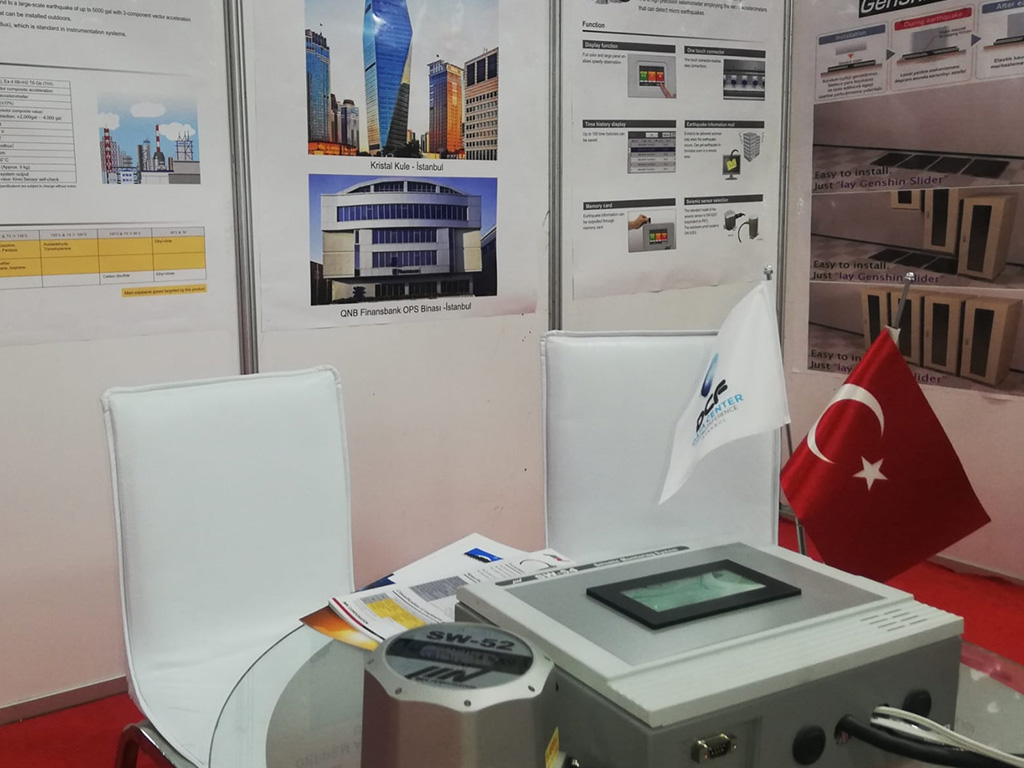
Fuji Engineering participated in the TurkeyBuild Fair held at Istanbul TÜYAP Fair and Congress Center on March 26-29, 2023, at its booth number 5111, Hall-8. IMV Emergency Intervention System, which prevents earthquake secondary disasters, and application examples in various industries and critical structures were introduced at our stand. IMV Earthquake Emergency Intervention System works on real-time according to the earthquake information measured at the place where it is installed (without causing false alarm). We would like to thank our valuable visitors for the interest shown in our innovative earthquake technologies and IMV products.
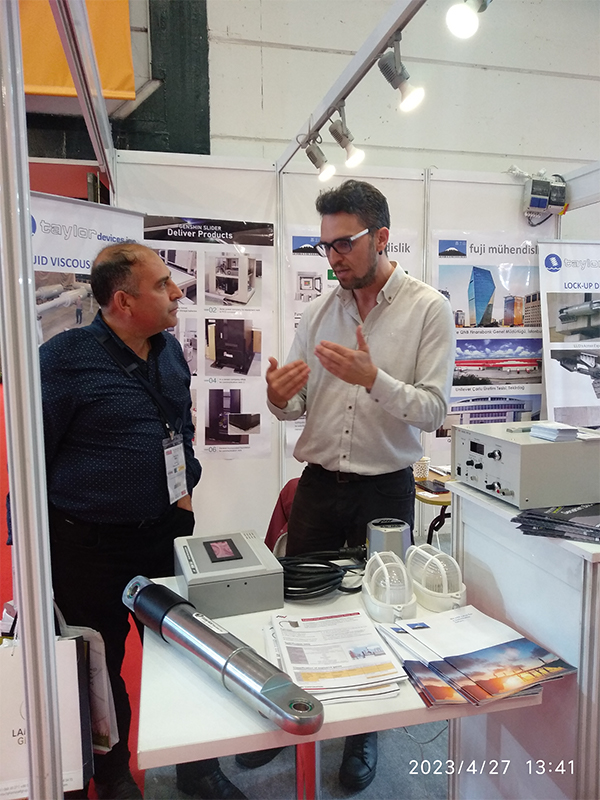
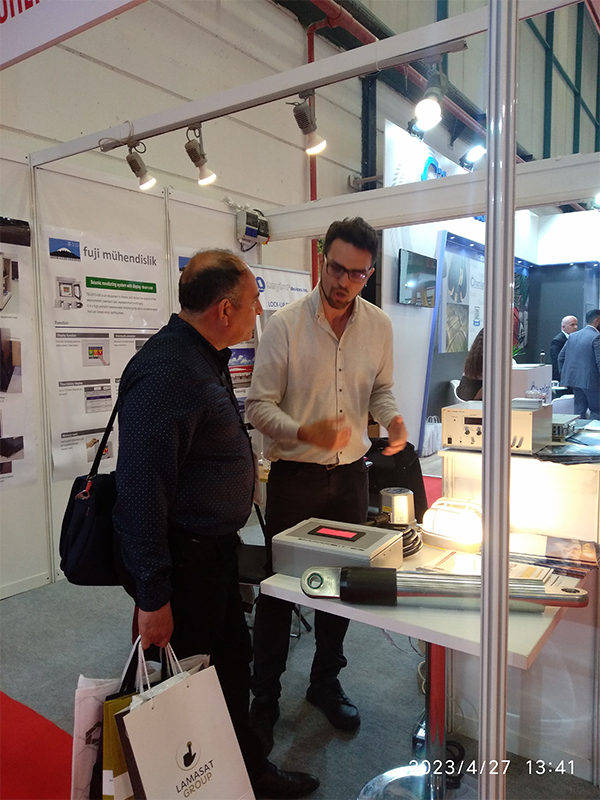
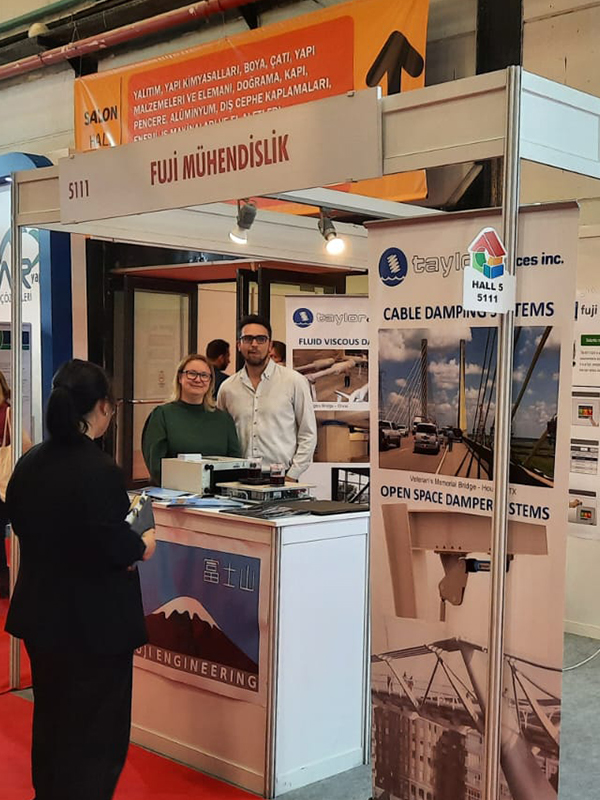
Applications
